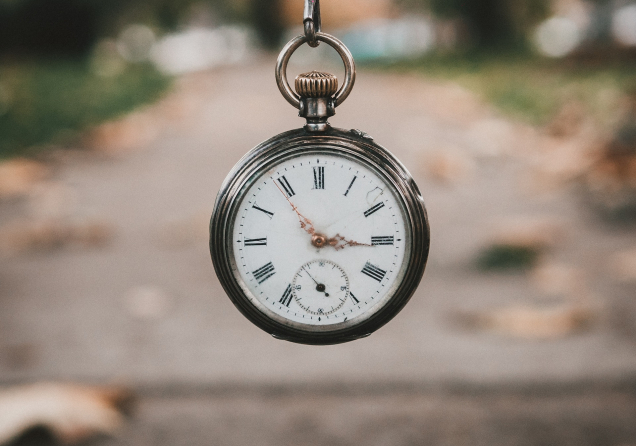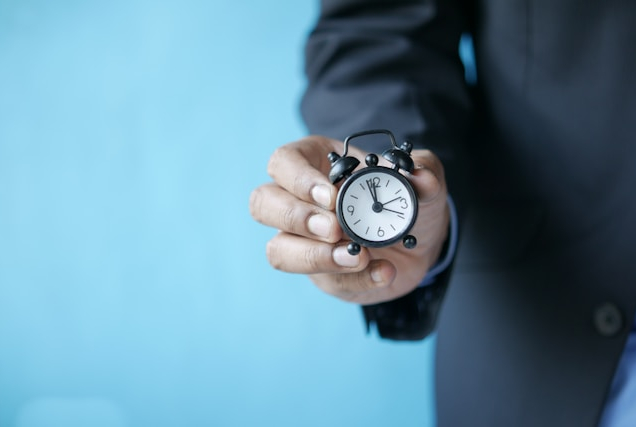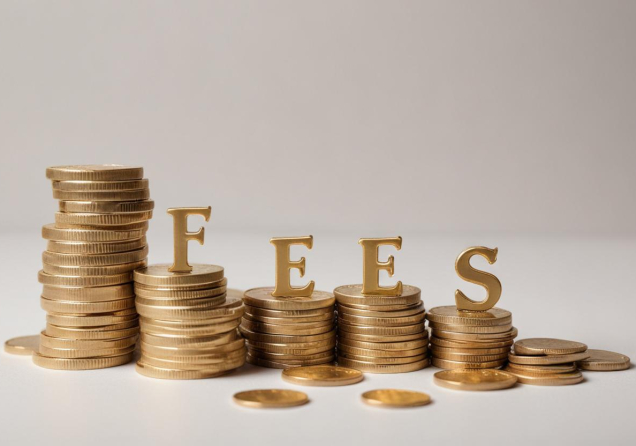Best Time Frames for Day Trading Forex and Crypto
| Disclaimer: The information provided in this article is for educational and informational purposes only and does not constitute financial or investment advice. Trading indices involves risk, and you should consult a qualified financial advisor before making any investment decisions. |
If you're new to trading, it might feel like the market is moving at lightning speed while you're still figuring out where to click. One of the biggest questions beginners ask is, “When should I trade?” Timeframes are a major part of day trading, whether you're trading crypto or forex.
Getting the timing right can make a noticeable difference in how often you see potential opportunities, how much risk you’re exposed to, and how manageable your trading routine is. Both the crypto and forex markets offer fast-paced environments with the chance to profit from short-term price movements. But not all times of the day are created equal.
This guide will walk you through the best time frames for day trading in both markets so you can avoid the noise and focus when it actually matters. Let’s start by breaking down what day trading means and why timing plays such a huge role in it. Day trading involves opening and closing positions within the same day. The goal is to profit from short-term price fluctuations.
It sounds simple enough, but this style of trading demands quick decisions, fast fingers, and a solid understanding of when markets are most active. That’s where choosing the right time frame comes in.
Forex Trading Time Frames: Why the Clock Matters
Forex trading is all about currency pairs. Since it's a global market, forex is open 24 hours a day, five days a week.
That’s great because it means you can trade almost any time you want. But if you want to maximize your chances of success, there are certain windows where the market tends to be more active.
According to Investopedia, the forex market opens at 5 p.m. Eastern Time on Sunday and closes at 5pm on Friday. But within that window, different trading sessions open and close depending on the region. These are the major ones:
- The Tokyo session opens at 7 p.m. and closes at 4 a.m. EST
- The London session runs from 3 a.m. to 12 p.m. EST
- The New York session goes from 8 a.m. to 5 p.m. EST
Now, here’s where it gets interesting. The best time to trade is usually when two sessions overlap. For example, when London and New York are both active between 8 a.m. and 12 p.m. EST, the volume and volatility are at their highest. That means more price movement, tighter spreads, and better opportunities. On the flip side, the slowest times are typically during the late evening in the US, when only the Asian markets are open.
While the Tokyo session can have decent movement, it’s generally quieter compared to London and New York. If you’re trading during those slower hours, you might experience less price action and wider spreads, which can eat into your profits.
As a beginner, the best time to trade forex is during the London-New York overlap. Not only is there more liquidity, but the price moves enough for you to spot trends or reversals more easily. It also fits well with the schedule of most traders in North America and Europe.
Crypto Day Trading: A Market That Never Sleeps
Now let’s look at crypto. Unlike forex, the cryptocurrency market doesn’t close. It runs 24/7. That sounds like a dream at first, but it can be overwhelming too. When do you sleep? When do you take a break? That’s why setting your own trading window becomes so important. The Gemini Cryptopedia breaks down the unique nature of crypto markets and what makes day trading in this space both exciting and risky.
Crypto markets tend to see higher activity during the same time frames as traditional finance. That’s because a lot of the money in crypto still comes from the US and Europe.
So while technically you can trade Bitcoin at 3 a.m., you’ll usually see the most volume and movement between 8 a.m. and 4 p.m. Eastern Time. That overlaps with both the London and New York sessions. If you're looking to trade actively, those hours are likely your best bet.

But because the crypto market runs all the time, news events can shake things up no matter what time it is. You could be asleep while a major hack, regulation change, or whale move causes the price to spike or crash. That’s something to keep in mind. Set alerts. Use stop-losses. Don’t go to bed with massive open positions unless you’re prepared to wake up to a surprise.
Crypto also tends to be more volatile than forex. The price swings are sharper, the market reacts more emotionally, and trends can form or reverse quickly. Because of that, many crypto traders prefer shorter timeframes like the 1-minute, 5-minute, or 15-minute charts. These help spot quick opportunities, though they require close monitoring and fast execution.
If you’re just starting out, try the 15-minute or 30-minute chart. These give you a clearer view of trends without feeling like you’re watching every tick. You’ll still need to stay focused, but it won’t feel as frantic as trading on the 1-minute chart.
Choosing the Right Time Frame for Your Lifestyle and Strategy
Trading is as much about psychology and energy as it is about market knowledge. Just because a certain time is active doesn’t mean it’s the best for you. If you’re a night owl, the Tokyo session in forex or late-night crypto trading might suit you. If you work a day job and can only check the charts in the morning or evening, plan your strategy around those windows. Some traders prefer to start their day with the market open and be done by noon. Others split their sessions.
The key is consistency. Pick a window of time you can stick to and master it. Don’t jump between time frames just because you saw a tweet saying someone made a killing trading at midnight. Also, different trading styles call for different timeframes. Scalpers like ultra-short charts like 1-minute or 5-minute intervals. Swing traders may prefer the 1-hour or 4-hour charts.
As a beginner, you’ll likely feel most comfortable starting somewhere in the middle. That gives you enough room to learn without getting overwhelmed.
Why Timing Also Affects Your Risk
One thing that doesn’t get talked about enough is how timing affects your risk. Trading during peak hours means more volatility, which can lead to bigger profits but also bigger losses. On the flip side, trading during low-volume periods can result in slower price movement and wider spreads, making it harder to exit trades cleanly.
That’s why managing your risk is just as important as finding the right time to trade. Use stop-losses to protect yourself. Don’t risk more than you can afford to lose. And if you’re not mentally sharp or well-rested, step away. A quiet day is better than a reckless one. Timing also affects your emotional state. Trading at a time when you're tired, distracted, or stressed can cloud your judgment. Build a routine that fits your life, your energy, and your learning pace.
Final Thoughts
Choosing the best timeframe for day trading is about finding the sweet spot between market activity and your personal rhythm. In forex, the London-New York overlap offers the most action and liquidity, especially for beginners. In crypto, while the market never closes, the highest volume still tends to follow the traditional finance world’s business hours.
Start with manageable timeframes like the 15-minute or 30-minute chart, and pick trading windows you can consistently show up for. As you gain experience, you can adjust your strategy, but the foundation should always be built around smart timing, clear setups, and strong risk control.
Whether you're drawn to forex’s structure or crypto’s always-on environment, the clock is one of your most powerful tools. Learn when the market speaks loudest, and when it’s better to just listen.
Top-Tier Trusted Brokers
The table below contains links to 3rd party websites of our top partners from whom we receive compensation at no additional cost to you.




























